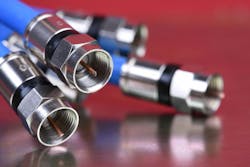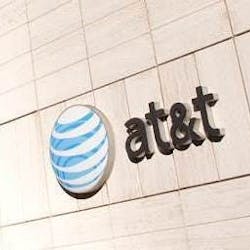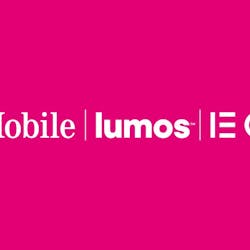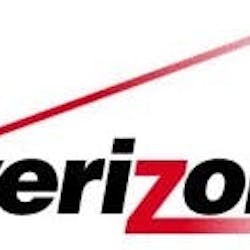By Helge Tiainen / InCoax
Fiber continues to be the preferred broadband technology for the Internet Service Provider (ISP) market as Passive Optical Network (PON) speeds increase to 25 Gbps, 50 Gbps and beyond, ensuring the speeds required to enable fast and reliable connectivity to support an increasing number of services in the home. According to the latest Point Topic report, fiber to the Home/Building (FTTH/B) accounts for 66.7% of the total global fixed broadband connection, with over 918 million connections.
As a result, Multiple Service Operators (MSOs) renowned for using hybrid fiber-coaxial broadband are focusing on FTTH deployments that provide faster broadband speeds for their customers and transform existing DOCSIS 3.1 infrastructure into FTTH infrastructure.
Governments worldwide are awarding millions of dollars in grants to telecom companies to provide high-speed broadband to close the digital divide. This includes the United States’ Broadband Equity, Access, and Deployment (BEAD) Program administered by the National Telecommunications and Information Administration (NTIA), which has pledged $42.45 billion to expand accessibility to high-speed internet.
According to Leichtman Research Group, among the cable operators and wireless companies controlling 96% of the U.S. home broadband market, MSOs accounted for a nearly 70% market share. This means that MSOs have much to lose if ISPs can tie up customers with future-proof fiber connectivity, especially those notoriously underserved and hard-to-reach, such as residents in Multiple-Dwelling Units (MDUs).
The MDU challenge
As of 2023, more than 30% of Americans lived in MDUs, such as apartments and condos, that are often deprived of fast connectivity compared to what is available to those who reside within standard housing or Single-Family Units (SFUs). This is because signing a broadband contract with a customer in an SFU is more manageable than an MDU, as the latter involves securing permissions from building and apartment owners for construction works and numerous tenants.
Once a luxurious selling point, high-speed broadband is now a necessity in all types of homes. As the MDU occupation remains a popular choice, landlords must ensure that current occupants are satisfied and that today’s connectivity requirements remain attractive to potential tenants.
The installation of new fiber cables in an MDU is incredibly complex as there are many barriers the process must overcome. Connectivity installations of an MDU are large-scale projects, meaning the potential costs to reform the network are extensive. An all-fiber solution can provide faster and more attractive connectivity to residents due to its bandwidth capacity. Yet, installing full fiber connectivity into a building with multiple tenants is considerably more complicated than installing into SFUs and other types of homes. This is because, in many MDUs, fiber cabling is not present or prepared, creating additional expense.
An MDU involves more people, and gaining approval from tenants and building owners can take time, especially if anyone has concerns. Only once this formal approval has been confirmed can work begin implementing brand new cabling and installing installations to connect multiple units from the ground floor of the building upwards.
As the ownership of indoor networks in MDUs lies with the property owners, it is increasingly difficult to convince them to proceed with a fiber deployment. Property owners often expect the ISP to pay for the in-building network construction costs, but it is not feasible for ISPs to foot the bill if the network does not belong to them.
As federal funds increase and make fiber deployments to those underserved communities more affordable, MSOs must react quickly to prevent ISPs from tying down property owners with future-proof fiber infrastructure.
Providing a swift turnaround
Brownfield MDU buildings often have existing coaxial networks, and reusing this infrastructure is a tangible possibility and offers a time-saving alternative for ISPs instead of installing fiber directly to the premises. The coaxial networks in MDUs can be used innovatively as in-building TV networks have been upgraded to support higher frequency spectrums thanks to the analog switchover to digital TV services.
ISPs can opt to use fiber access extension technology for a cost-effective and less complex broadband upgrade as it utilizes the existing in-building coax cable infrastructure. The technology provides multi-gigabit broadband services, positioning it as a clear frontrunner when optical fiber cannot be deployed due to construction limitations, a lack of ducts, building accessibility, and technical or historic preservation reasons.
To reduce ISPs' operating costs, an integrated solution that can be managed on the same network is needed for FTTH and fiber extension technologies.
Enabling fast deployments and lower OPEX with integrated services
Nokia has recently announced that it will offer a solution that integrates FTTH and MoCA Access 2.5 broadband seamlessly to serve MDUs swiftly and efficiently with fast connectivity where fiber installations are not feasible.
Adding InCoax’s MoCA Access 2.5 technology enables ISPs and MSOs to deliver multi-gigabit services over the existing coaxial cable in MDU buildings without creating a separate network for its existing FTTH deployments. This offers multi-gigabit speeds of up to 2.5 Gbps and has the potential to provide up to 10 Gbps shortly. If the property’s coaxial network is already upgraded to the DOCSIS 3.1 standard covering the 5-1218 MHZ spectrum, it can support both traditional TV services and MoCA Access multi-gigabit services.
MSOs can extend their FTTH deployments to MDUs and repurpose the property’s coaxial network with fiber access extension technology to connect each apartment building unit. This streamlined approach reduces deployment time and costs for property owners, landlords, and residents while ensuring optimal performance.
By deploying the right connectivity solution, ISPs and MSOs can decrease overall expenses and still bring ubiquitous connectivity to all corners of the home. Complementary access technologies can be the answer for ISPs looking to navigate away from costly and complex FTTH deployments and deliver high-quality broadband to tenants regardless of location.
Therefore, Nokia’s integrated solution can provide ISPs and MSOs with a flexible solution that will enable them to maintain and claim more of the market share of the home broadband market, as they can now provide swift and cost-effective multi-gigabit broadband to underserved communities.






